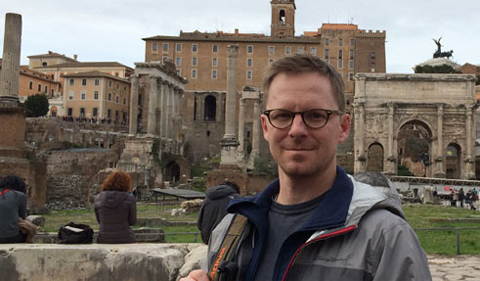
Cory Crawford
Dr. Cory Crawford was interviewed by for an LDS Perspectives podcast headlined “Cory Crawford on the Documentary Hypothesis of Biblical Origins.”
Crawford is Assistant Professor of Classics & World Religions at Ohio University.
Cory Crawford: That’s a good question. It’s a broad question. I’m not sure how to approach it besides maybe to launch into the story of how not just Genesis, but the first five books (Genesis, Exodus, Leviticus, Numbers, and Deuteronomy) came to be understood in terms of their production, composition, and authorship by readers of the Old Testament.
From a very early period — some people say before even the ink was drying on the manuscripts — people were transmitting these stories; they were rewriting them; scribes were recopying them, reading them, and interpreting them. As they did so, they started to notice that some of the stories don’t quite fit together in the way that normal storytelling would, whatever that means. There were contradictions, and there were stories that were repeated twice.
Maybe the first and most apparent example is how we know the story of Adam and Eve, as you mentioned. They’re created in Genesis 2, where there’s this sort of single creature — or sometimes it’s translated “the earthling,” the human, who is split somehow into a male version and a female version. But in Genesis 1, we had already been notified of the creation of humans, male and female, in the famous verses of humans being created in God’s image. Right there, it plainly says it in the first story, in Genesis 1. It famously begins, “In the beginning, when God began to create the heavens and the earth,” etc. That begins this 7-day creation cycle. It’s a very ordered, very structured process of creation.
On day one, you have the creation of light and the separation of light and darkness. On day two, you have the creation of the firmament, the dome that separates the waters above the earth from the waters below the earth — so the skies and the seas, in other words. On day three, you have the creation of the seas and the dry land and the plants on the dry land. Then on day four, you have the creation of the sun, moon, and stars, which parallels day one. On day five, you have the creation of the birds and the fish, which parallels the sky and the sea from day two. On day six, you have the creation of the land, animals, and the humans, which parallels the dry land of day three.
It’s a very structured, very ordered creation, but then when you get to Genesis 2, it seems to start over again but with a different order. It says that before there were any plants, “out of the dust of the earth,” God created this earthling, this human. There’s a different order of creation and then also, the names of God that are used in those two chapters are different. So there are these kinds of discrepancies, inconsistencies, and difficulties….
A transcript of the podcast is available online.
The podcast also was run by USA Today online.


















Comments